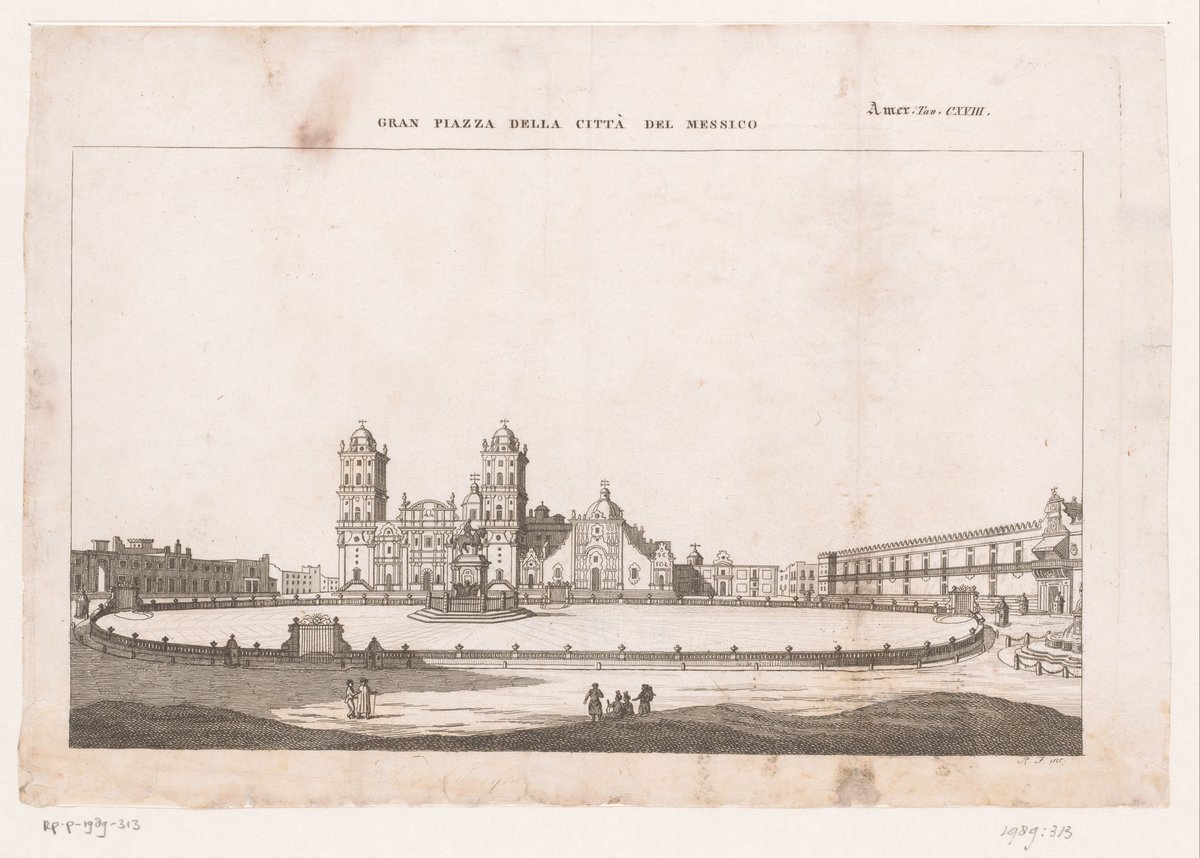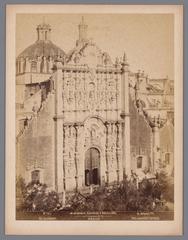
Mexico City Metropolitan Cathedral: Visiting Hours, Tickets, and Historical Sites Guide
Date: 14/06/2025
Introduction: History and Significance
The Mexico City Metropolitan Cathedral (Catedral Metropolitana de la Asunción de la Santísima Virgen María a los cielos) is an unparalleled icon of Mexico’s architectural splendor and layered history. Rising majestically above the historic center’s Zócalo, it was constructed over nearly 240 years atop the sacred ruins of the Aztec Templo Mayor. This cathedral embodies the convergence of indigenous heritage and Spanish colonial ambition, serving as both a monumental architectural achievement and the beating heart of Mexico’s spiritual and civic life. Visitors are captivated by its unique fusion of Renaissance, Baroque, and Neoclassical styles, as well as its ornate altars, grand organs, and profound symbolism. As the largest cathedral in the Americas and a UNESCO World Heritage Site, it offers a rare window into centuries of Mexican art, faith, and cultural identity (CyArk, 2018; Britannica; TripSavvy).
This guide provides all essential details for planning your visit, from architecture and history to hours, tickets, accessibility, tours, and nearby attractions.
Table of Contents
- Introduction
- Historical Foundations & Syncretism
- Architectural Evolution
- Art, Symbolism, and Highlights
- Visitor Information
- Special Events & Experiences
- Nearby Attractions
- Frequently Asked Questions (FAQs)
- Practical Advice for Visitors
- References
Historical Foundations & Syncretism
The cathedral’s origins are deeply symbolic: it sits on the ruins of the Templo Mayor, the Aztecs’ holiest precinct, a deliberate act by Spanish conquistadors to assert Catholic and colonial dominance after the fall of Tenochtitlan. Construction began in 1573 and continued until 1813, resulting in a rich tapestry of architectural styles as successive architects and political regimes left their mark (CyArk, 2018; Understand Mexico).
This foundation remains visible in the cathedral’s materials—repurposed stones from the Aztec temple—and in its spiritual syncretism. Indigenous symbols and motifs, such as floral and animal carvings and the eagle emblem, subtly appear alongside Catholic iconography (The Creative Adventurer).
Architectural Evolution
Styles and Construction
The cathedral is a masterpiece of eclectic colonial architecture:
- Renaissance and Gothic foundations dominate the earliest sections.
- Baroque flourishes, especially on the ornate facades, altars, and the Metropolitan Tabernacle (Sagrario Metropolitano), are hallmarks of the 17th and 18th centuries (Britannica).
- Neoclassical influences appear in the finishing touches, particularly in the dome and central façade, guided by architect Manuel Tolsá.
Distinctive features include two soaring bell towers (with 25 bells), the Churrigueresque Altar de los Reyes, and richly decorated chapels (CyArk, 2018).
Structural Challenges
Built on the soft lakebed of Lake Texcoco, the cathedral has long faced subsidence and earthquake damage. Recent decades have seen extensive engineering and restoration efforts, especially after the 2017 earthquake, to stabilize and preserve this monumental structure (Understand Mexico).
Art, Symbolism, and Highlights
- Altar de los Reyes: This golden altar is a Baroque masterpiece by Jerónimo de Balbás, resplendent with saints and scenes from the Virgin Mary’s life.
- Chapels: Fourteen chapels are open to the public, dedicated to saints and religious brotherhoods, each with unique art and relics (MexicoHistorico).
- Pipe Organs and Choir: Two monumental colonial Spanish pipe organs and intricately carved choir stalls are highlights of New Spain’s musical and artistic legacy.
- Metropolitan Tabernacle: Adjacent on the east, this exuberant Churrigueresque structure houses the cathedral’s most sacred relics and hosts special liturgical functions (Britannica).
- Relics and Devotional Images: Includes the tomb of Juan de Zumárraga (first Archbishop of Mexico) and venerated images like El Cristo del Veneno and El Santo Niño Cautivo.
Visitor Information
Hours & Admission
- Open: Daily, 8:00 AM – 8:00 PM (check for variations during religious holidays or special events) (Trip.com).
- Admission: Free to main areas. Donations are welcome and help with ongoing conservation.
- Tickets: Required for special tours (e.g., bell towers, crypts), available at the entrance or online (Infovacay).
Accessibility
- Wheelchair access via ramps; elevators to certain areas.
- Assistance available, though some historic areas (like bell towers) may not be fully accessible (Trip.com).
Guided Tours
- Languages: Spanish, English, and others upon request.
- Booking: Onsite or via official tourism providers. Guided tours are highly recommended for in-depth history and access to restricted areas (World History Edu).
Safety & Tips
- The Zócalo is busy; keep an eye on belongings.
- Dress modestly; silence and respect are expected in worship areas.
- Photography is allowed without flash or tripods (Infovacay).
- Visit early or late to avoid crowds and enjoy the best lighting for photos.
Special Events & Experiences
- Religious Services: Daily masses and major Catholic celebrations like Easter, Christmas, and the Feast of the Assumption (The Catholic Travel Guide).
- Concerts: The historic organs are featured in regular concerts.
- Civic Events: The cathedral is the backdrop for national celebrations and processions.
Nearby Attractions
- Templo Mayor Archaeological Site: Adjacent, with museum and ruins of the Aztec temple (TripSavvy).
- National Palace: Across the square, home to Diego Rivera murals.
- Zócalo Square: The heart of civic life and public events.
- Dining & Shopping: Numerous restaurants, cafes, and souvenir shops line the surrounding streets.
Frequently Asked Questions (FAQs)
Q: What are the cathedral’s visiting hours?
A: Daily, 8:00 AM – 8:00 PM. Check for holiday variations.
Q: Is admission free?
A: Yes, for main areas. Special tours may require a ticket.
Q: Are tours available?
A: Yes, daily in multiple languages, with advance booking recommended.
Q: Is the cathedral accessible for people with disabilities?
A: Main entrances are accessible; some areas like bell towers are not.
Q: Can I take photos?
A: Yes, without flash or tripods.
Q: What else is nearby?
A: Templo Mayor, National Palace, and Zócalo, all within walking distance.
Practical Advice for a Memorable Visit
- Best Times: Early morning or late afternoon for fewer crowds.
- Dress Code: Modest attire; bring a light jacket.
- Weather: June can bring rain—wear water-resistant shoes (Lets Travel to Mexico).
- Language: English-speaking guides are available.
- Support the Cathedral: Consider a donation to aid preservation.
References
- CyArk, 2018
- Britannica
- TripSavvy
- Tourist Secrets
- The Catholic Travel Guide
- The Tourist Checklist
- Trip.com
- The Complete Pilgrim
- Understand Mexico
- The Creative Adventurer
- Connolly Cove
- World History Edu
- Infovacay
- MexicoHistorico
- Lets Travel to Mexico
Final Thoughts
The Mexico City Metropolitan Cathedral is more than an architectural marvel—it is a living symbol of Mexico’s rich, complex history, and vibrant cultural identity. Open daily with free admission, it offers a powerful experience for every visitor, whether you’re admiring its artistry, attending mass, or exploring its history through a guided tour. For the most up-to-date information, consult official travel resources and consider the Audiala app for interactive guides and insider tips.











































































































































































